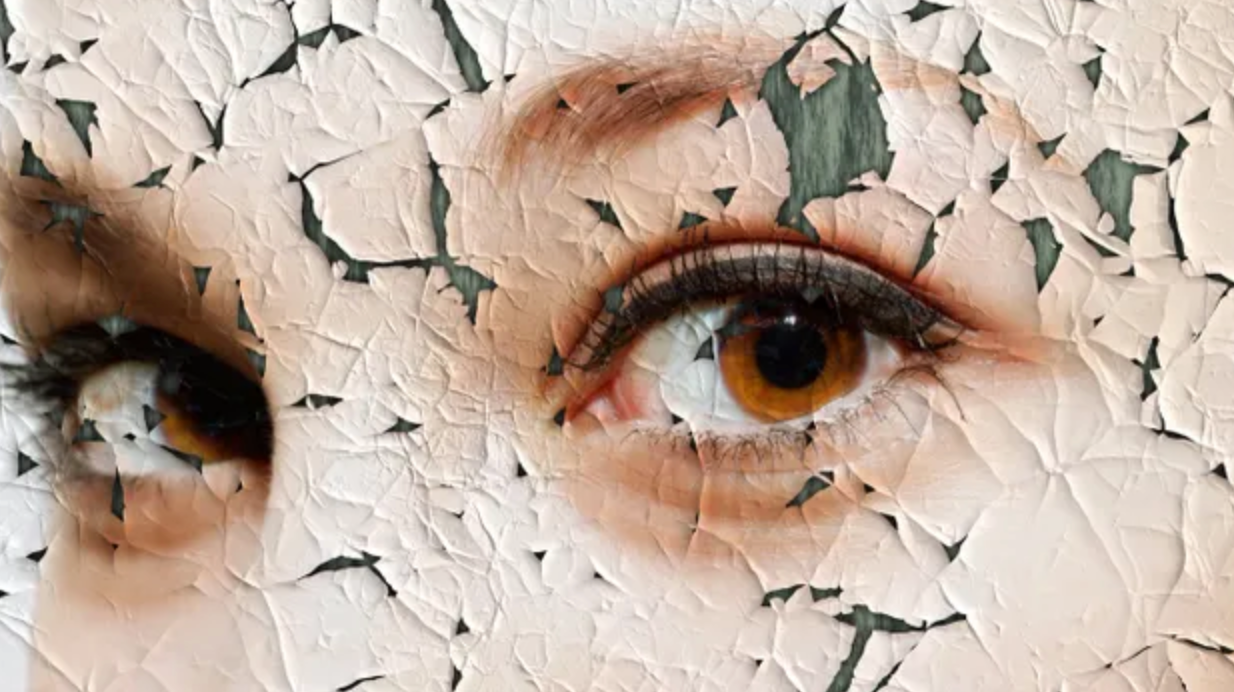Dry skin, medically known as xerosis, is characterized by cracked, rough, scaly, or itchy skin.
Most people will experience dry skin at some point in life, as it’s one of the most common skin conditions.
In fact, a
If your skin feels dry, you might reach for your favorite moisturizer. Problem solved, right?
Well, not necessarily. Moisturizers often do help relieve dry skin, yes. But they’re not always effective.
If you’ve ever wondered why your skin remains so dry and chapped when you moisturize regularly, keep reading to learn some of the possible answers.
Not sure why your skin is so dry despite moisturizing? These 13 reasons can help you start narrowing down potential explanations.
1. Not exfoliating
Over time, dead skin cells can build up on the surface of your skin and can give it a dry and flaky texture.
Exfoliating can help remove these cells and potentially improve the texture of your skin.
2. Overwashing
The surface of your skin contains oil, along with molecules called natural moisturizing factors. These help protect your skin’s natural moisture barrier. Overwashing your skin can lead to dryness since it removes these molecules.
If your skin feels tight or irritated after bathing, it may be a sign you’re overwashing.
Of course, overwashing — at least for hands — has become pretty much par for the course, thanks to COVID-19. Along with washing your hands more frequently, you might also use more hand sanitizer, which can also dry out your hands.
These tips can help keep your hands healthy and prevent them from drying out:
- Opt for soap over sanitizer when possible.
- Use fragrance-free, dye-free soap.
- Pat your hands dry instead of rubbing them.
- After washing, apply a fragrance-free, dye-free moisturizer.
3. Dehydration or malnutrition
The outer layer of your skin is made up of about
A
Eating a balanced diet that contains the right nutrients can also make a difference.
Deficiency in the following essential vitamins can also contribute to skin dryness:
4. Using a harsh cleanser
Using harsh soaps and cleansing products can potentially irritate or dry out your skin.
Cleanser ingredients that might play a part in dry skin include:
- isopropyl alcohols
- benzyl alcohol
- sulfates
- fragrances
Cream cleansers are often a gentler option than gel or foam cleansers. If your skin tends to feel dry, choosing a cream cleanser could make a difference.
5. Your moisturizer’s ingredients have lost effectiveness
Most moisturizers last a long time. Still, it never hurts to check the expiration date on your products, since a moisturizer past its expiration date may not work as effectively.
Keeping your products away from sources of heat, like sunny windows, can also help extend their life.
Always make sure to avoid buying products missing a lid seal, too.
6. Your skin might need a different product
Different moisturizers work best for different skin types. If you’re prone to dry skin, you may need a thicker moisturizer than somebody with oilier skin.
Other ingredients that may help treat dry skin include:
- antioxidants
- aquaporins
- glycerin
- hyaluronic acid
- plant butters and oils
- salicylic acid
- urea
7. Side effects of certain medications and medical treatments
Some medications or medical treatments can cause dry skin as a side effect. These include:
- retinoids
- benzoyl peroxide
- diuretics
- beta-blockers
- hormonal birth control
- topical steroids
- cholesterol-lowering drugs
- radiation therapy
- chemotherapy
8. Skin conditions
Some types of skin conditions can lead to patches of dry skin, including:
- atopic dermatitis (eczema)
- allergic contact dermatitis
- irritant contact dermatitis
- psoriasis
- seborrheic dermatitis (dandruff)
Some infectious diseases like scabies, along with bacterial or fungal infections, can also lead to dry skin.
9. A cold, dry climate
Cold air naturally holds less moisture than warmer air, and it can draw moisture away from your skin and cause it to dry out.
Prolonged exposure to sunlight can also contribute to skin dryness.
10. Very hot showers, baths, or exposure to chlorinated water
Taking excessively hot showers or baths can damage the outer layer of your skin and strip it of its naturally protective oils.
If you swim frequently, the chlorine found in swimming pools might also play a part in skin dryness. Chlorine also has the potential to strip natural oils from your skin.
11. Underlying medical conditions
Some medical conditions can factor into dry skin. Some examples include:
Hormonal changes associated with menopause and pregnancy can also lead to dryer skin.
12. Genetics and race
Some people are naturally more prone to developing dry skin than others.
For instance, Black people tend to
Some
13. Aging
You’re more likely to have dry skin as you age, according to the
This happens, in part, due to the reduction of sweat and oil glands that happens naturally during the aging process.
Older adults also tend to have more risk factors for dry skin, including menopause and chronic conditions like diabetes and kidney disease.
Plus, as noted above, dry skin can also happen as a side effect of certain medications. Some of these medications, like blood thinners or heart and blood pressure medications, are commonly prescribed to older adults.
The key signs of dry skin appear on your facial skin or the skin on the rest of your body.
You might notice some or all of the following symptoms:
- a feeling of tightness
- skin that looks or feels rough
- an ashy appearance, if you have brown or black skin
- flaking
- scaling
- cracks in the skin that may bleed
- itching
- wrinkles or lines
The way you apply moisturizer can play a role in determining its effectiveness. These tips can help you maximize the benefits of moisturizing.
Moisturize right after bathing
Moisturizers work, in part, by trapping moisture on your skin.
Ingredients that have a water-trapping effect are known as occlusives. The best time to apply occlusives is right after bathing, within a few minutes of towel drying.
Find the right moisturizer
Using the wrong type of skin products can contribute to skin dryness. Removing potentially drying products from your skin care routine may be enough to moisturize your skin. But you can also try switching to a product specifically designed to target dry skin.
The American Academy of Dermatology Association recommends choosing products that contain:
- shea butter
- petrolatum
- mineral oil
- lanolin
- lactic acid
- jojoba oil
- hyaluronic acid
- glycerin
- dimethicone
Moisturize in the morning and before bedtime
You may want to try applying a light moisturizer in the morning and a heavier moisturizer before bed to maximize the amount of time the product stays in contact with your skin.
For your daytime moisturizer, consider a product that contains some level of SPF protection. Preventing sun damage can also help prevent overly dry skin.
Use a hydrating toner
Toners may help cleanse skin and prepare it for a moisturizer. Some toners even target specific skin concerns like dryness, acne, or sun damage.
You’ll typically get the best results when applying a toner after your cleanser and before serums and moisturizers.
Use a serum
Serums contain a high concentration of active ingredients, like hyaluronic acid or vitamin C. Typically, you’d apply these after cleansing and before moisturizing.
Learn which serums might work well for dry skin.
Use creams instead of lotions
Creams and ointments tend to be thicker, so they may prove more effective than lotions if you have consistently dry skin.
Although the terms sound similar, dry skin and dehydrated skin refer to different issues.
Dry skin refers to skin that becomes dry and flaky due to a lack of oil and natural moisturizing factors.
Dehydrated skin occurs when you don’t have enough water in your skin.
Dehydration can cause your skin to become less elastic and more prone to showing fine lines and wrinkles. It can also raise your chances of developing dry skin.
Dry skin can peel and crack, opening your skin up (literally) to bacteria and raising your chances of developing an infection.
If your dry skin becomes itchy and you scratch it, you can eventually tear your skin. Tears in the skin can further increase your chance of developing an infection.
Signs of infection include:
- yellow crusting
- discharge or pus
- swelling
- redness and other discoloration
- skin that feels hot to the touch
Dry skin can sometimes happen as a symptom of certain health conditions, like diabetes or kidney disease.
If you have either of these conditions, dry skin could indicate a change in your condition, such as high blood glucose. Diabetes can also raise your risk of serious complications from skin wounds and infections.
Dry skin usually isn’t serious, and it often improves with lifestyle changes or more frequent moisturizing.
That said, you’ll want to reach out to a dermatologist if you:
- experience itching that interferes with sleep or your daily activities
- notice signs of infection, like discoloration or swelling, or your skin feels warm to the touch
- develop a rash, wounds, or bleeding cracks in your skin
- don’t notice any improvement after using moisturizers or other home remedies
A number of factors can contribute to dry skin.
If you moisturize your skin regularly but still notice lingering dryness, you may want to check your moisturizer for potentially dehydrating ingredients, such as isopropyl alcohol or sulfates. You may get better results with products containing ingredients like glycerin, hyaluronic acid, or ceramides.
Dry skin rarely poses a serious cause for concern. Still, if it becomes a persistent problem or leads to discomfort, a dermatologist can offer more personalized guidance and treatment.
EPILYNX SKINCARE TIP: Choose a moisturizer with less ingredients but where each ingredient does contribute to the efficacy of the moisturizer and not just a 'fill'. 100% white pure petrolatum, glycerin and hyaluronic acid are a must for the hydrating skincare.



